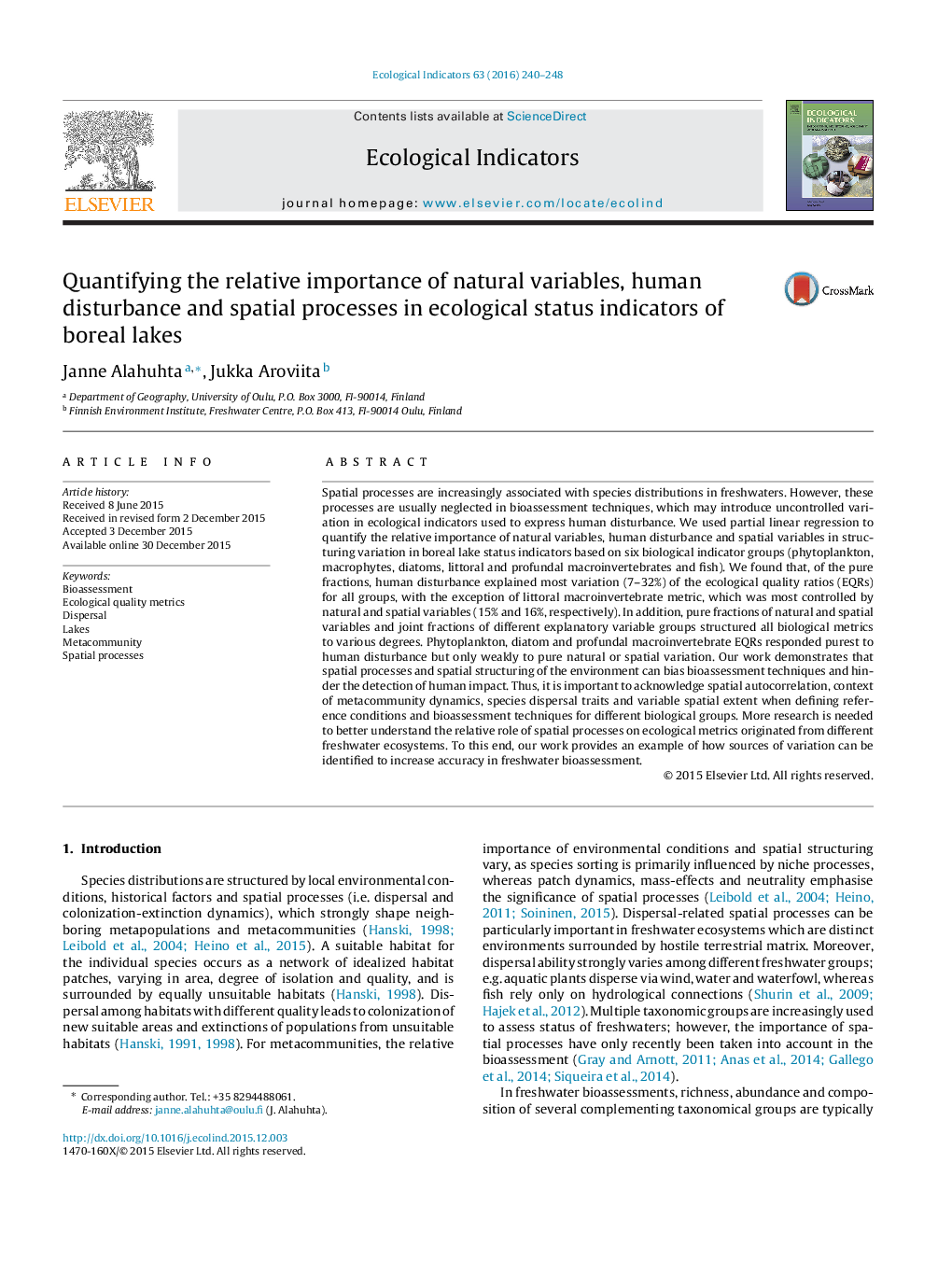| کد مقاله | کد نشریه | سال انتشار | مقاله انگلیسی | نسخه تمام متن |
|---|---|---|---|---|
| 6293862 | 1617139 | 2016 | 9 صفحه PDF | دانلود رایگان |

- Natural and/or spatial variables affected all metrics.
- Both natural and human disturbance variables were spatially structured.
- Spatial variation of reference sites may have important implications for assessment.
- Species dispersal traits and variable spatial extent may affect status indices.
Spatial processes are increasingly associated with species distributions in freshwaters. However, these processes are usually neglected in bioassessment techniques, which may introduce uncontrolled variation in ecological indicators used to express human disturbance. We used partial linear regression to quantify the relative importance of natural variables, human disturbance and spatial variables in structuring variation in boreal lake status indicators based on six biological indicator groups (phytoplankton, macrophytes, diatoms, littoral and profundal macroinvertebrates and fish). We found that, of the pure fractions, human disturbance explained most variation (7-32%) of the ecological quality ratios (EQRs) for all groups, with the exception of littoral macroinvertebrate metric, which was most controlled by natural and spatial variables (15% and 16%, respectively). In addition, pure fractions of natural and spatial variables and joint fractions of different explanatory variable groups structured all biological metrics to various degrees. Phytoplankton, diatom and profundal macroinvertebrate EQRs responded purest to human disturbance but only weakly to pure natural or spatial variation. Our work demonstrates that spatial processes and spatial structuring of the environment can bias bioassessment techniques and hinder the detection of human impact. Thus, it is important to acknowledge spatial autocorrelation, context of metacommunity dynamics, species dispersal traits and variable spatial extent when defining reference conditions and bioassessment techniques for different biological groups. More research is needed to better understand the relative role of spatial processes on ecological metrics originated from different freshwater ecosystems. To this end, our work provides an example of how sources of variation can be identified to increase accuracy in freshwater bioassessment.
Journal: Ecological Indicators - Volume 63, April 2016, Pages 240-248